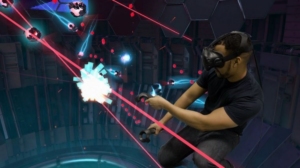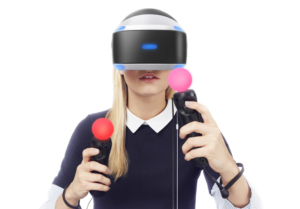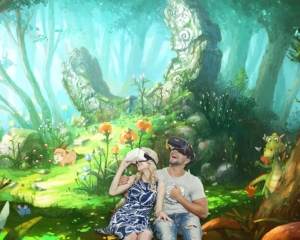Imagine being under water without getting wet or floating in outer space without being an astronaut. Although the technology that exist today are still evolving, we all might be able to do that soon.
Virtual Reality is simulating the real world through the use of technology. People are able to experience things that are non-existent to the real world or experience extreme adventures without physically getting hurt. The virtual world trick’s a person’s brain and tells them what they are seeing is real. But what’s truly amazing is how our brain works to adjust our senses to produce a real experience. This means there are multiple factors to consider when designing for the best user experience.
Interaction

The virtual reality software should be able to track the user’s precise head and eye movement. They should be designed to have a 360-degree view in order to provide a highly interactive experience. The view should constantly change depending on the user’s movement and provide immediate feedback. That’s how it gets realistic. If the screen is limited, there will only be limitations in the experience. The user should be able to interact with the virtual world in every possible way. The biggest challenge designers have is providing navigations. Since virtual reality has no endpoints, it’s difficult to place any navigation for the user. Designers have to experiment depending on the software they are creating. There are a few factors that do not exist today such as touch, taste and smell, which we hope to come soon!
Comfort

One of the most important quality is to ensure comfort throughout the experience. It is critical to allow users to have complete control of their movement, not to mention the comfort of the device. Limitation in movement would defeat the purpose in the experience. Another major problem with virtual reality is motion sickness. If a user experiences sudden changes in movement or were to use the device all day, there is a chance they won’t be able to use it anymore due their discomfort. Brightness changes, velocity mismatches, effective head and eye tracking are very important. (Anderson, S. 2016) It is hard to keep the users safe. They are in the virtual world and they are not aware of the surroundings in the real world. It is best if the users can use the virtual reality device in a controlled environment, for example if used at home they should be monitored by an adult.
Text and image scale

Attention to detail is critical when it comes to the real experience. The way a user perceives the world is what they see. The images and texts should depict the real world with clear texts and high quality images. Designers need to consider the perspective users would look at, otherwise they might end up straining the user’s eyes. There are comfortable viewing zones in different range of motion. Designers would have to figure out the angle of view users would be looking at and design the images accordingly.
Sound

What if there is no sound? We hear a lot of things in the real world, which means the virtual world needs to do the same. By applying 3D audio effects, the users will know which direction the sound is coming from and move accordingly. There is a technique called “binaural sound” which is a technique that tricks the brain into believing the sound comes from different locations. (Staff, C. B. 2016). This helpful technique produces real sounds that depict the real world by surrounding the user with what they need to hear.
Conclusion
There are so many things to consider when it comes to designing a virtual reality software. Designing for anything is easier said than done. Since virtual reality is a 3D experience that depict the real world, much attention to detail is needed. There is still a long way to go. I feel like until the five senses are integrated into the experience, we cannot say it depicts the real world just yet.
References
- Anderson, S. (2016, April 14). You’re the center of the universe: A UX guide to designing virtual reality experiences. Retrieved October 31, 2017, from https://www.dtelepathy.com/blog/philosophy/ux-guide-designing-virtual-reality-experiences
- Staff, C. B. (2016, March 16). The UX of VR. Retrieved October 31, 2017, from http://www.creativebloq.com/ux/the-user-experience-of-virtual-reality-31619635
- (2017, August 07). How VR Is Changing UX: From Prototyping To Device Design. Retrieved October 31, 2017, from https://uxplanet.org/how-vr-is-changing-ux-from-prototyping-to-device-design-a75e6b45e5f8
- Hudelson, B. (2017, May 16). Designing for VR | A Beginners Guide – Prototypr. Retrieved October 31, 2017, from https://blog.prototypr.io/designing-for-vr-a-beginners-guide-d2fe37902146
- (2016, May 08). Design Practices in Virtual Reality – uxdesign.cc. Retrieved October 31, 2017, from https://uxdesign.cc/design-practices-in-virtual-reality-f900f5935826
